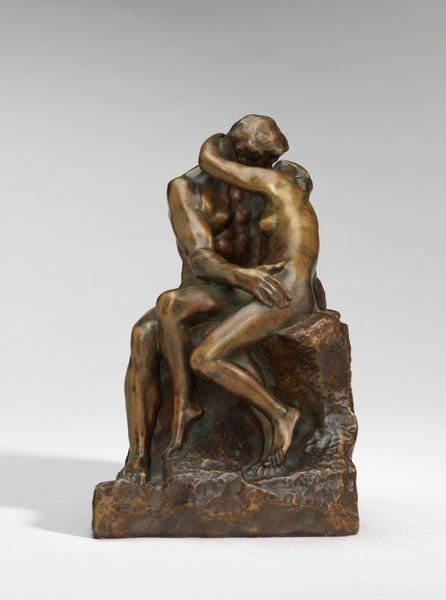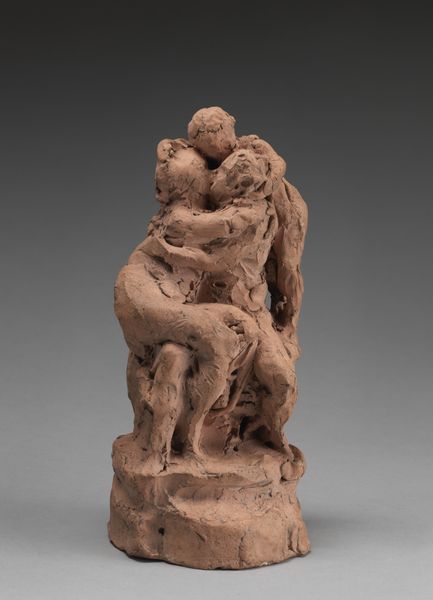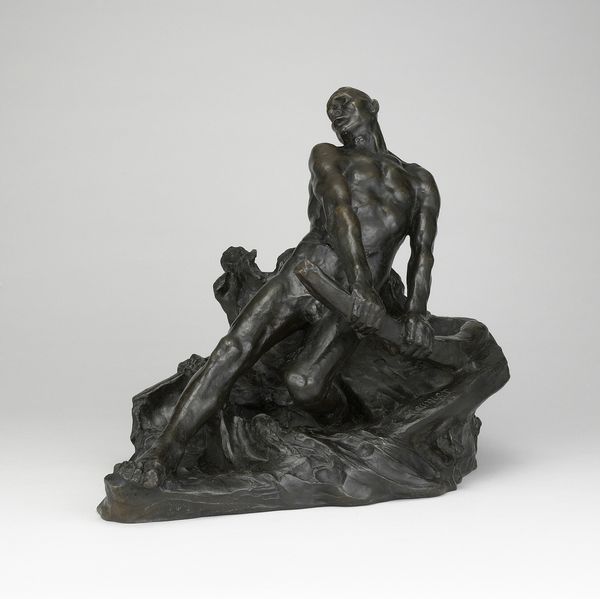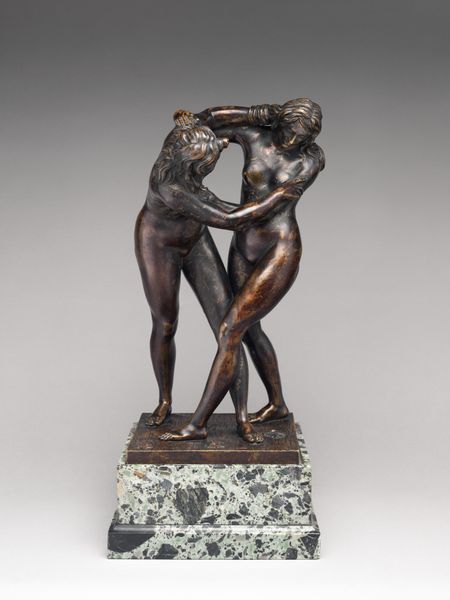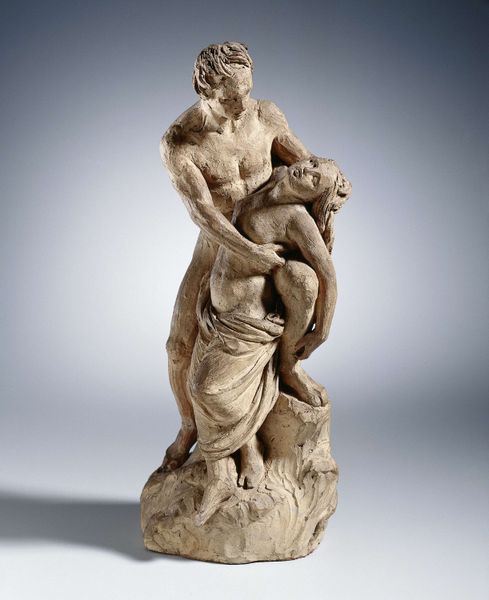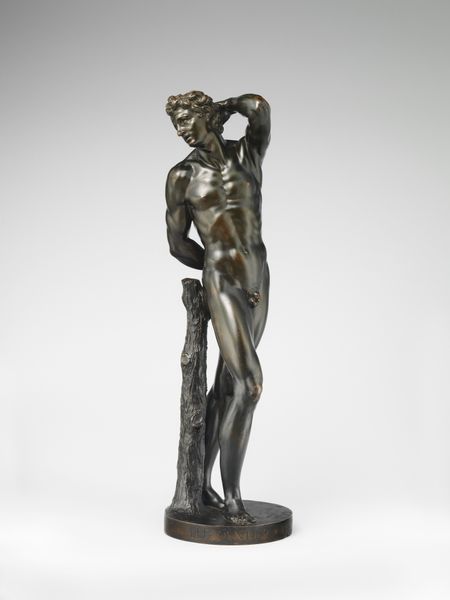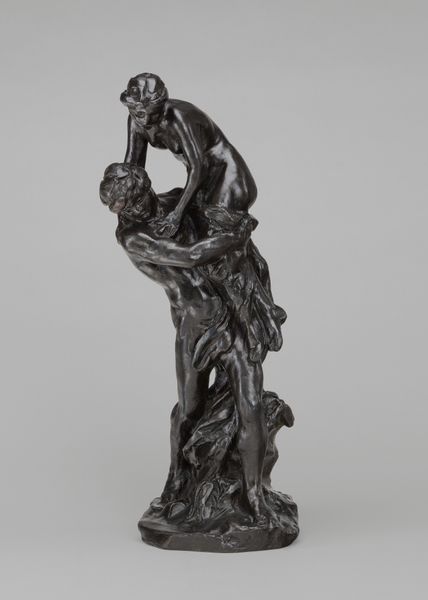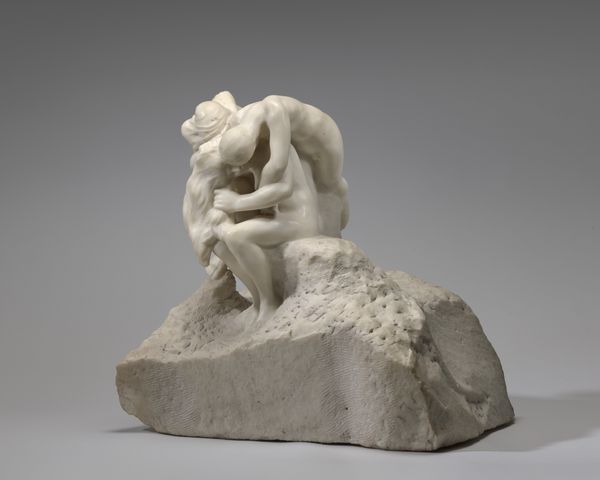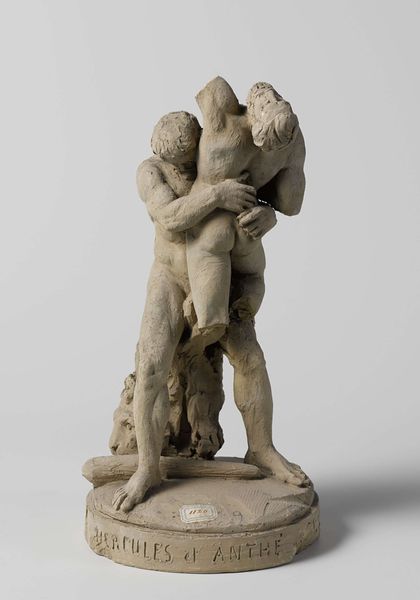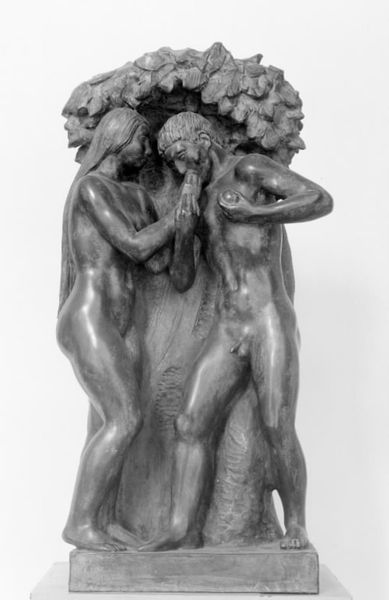
Dimensions: Overall (wt. confirmed): 15 × 8 1/2 × 8 in., 18.7 lb. (38.1 × 21.6 × 20.3 cm, 8.5 kg)
Copyright: Public Domain
Editor: Here we have Auguste Rodin's *Brother and Sister*, a bronze sculpture created around 1890, which now resides at the Metropolitan Museum of Art. It’s remarkably tender, almost heart-wrenching in its depiction of embrace. The raw texture of the bronze contrasts so much with the delicate depiction of their relationship, and somehow really enhances it! What catches your eye when you look at this piece? Curator: Oh, the humanity of Rodin, it fairly vibrates off the bronze, doesn't it? What I see here is Rodin grappling with the universal, eternal bond between siblings. The way he leaves the figures unfinished, almost emerging from the raw material itself… it reminds us that relationships, particularly family ties, are complex, messy, and forever in formation. They’re never quite complete, are they? I wonder, do you get a sense of conflict, or solely comfort from their embrace? Editor: I get both! It’s comforting, but the clinging makes it feel like perhaps there’s a dependency there, too, a need. Is that what you mean by 'unfinished,' this idea that their relationship isn’t necessarily all smooth sailing? Curator: Precisely. Look at the older sibling's face – it's not idealized beauty, it's burdened, almost mournful. Rodin gives us the beautiful, messy truth of connection – the responsibility, the exhaustion, the unwavering love that knots it all together. Bronze seems perfect for conveying the weighty, enduring feel. Perhaps they just told each other some heartbreaking family secrets, eh? What’s bronze-worthy in your family history? Editor: I'm suddenly feeling very grateful for my noise-canceling headphones on the subway! That's quite an image. I’ll definitely be looking at Rodin with fresh eyes now. Thanks for untangling all of that for me! Curator: My pleasure! Sometimes art just asks you to bring your own entanglements. It mirrors life back to you in the shiniest, sometimes roughest, of materials. And now, perhaps, time for a bracing walk through the museum's collection of teacups.
Comments
No comments
Be the first to comment and join the conversation on the ultimate creative platform.
